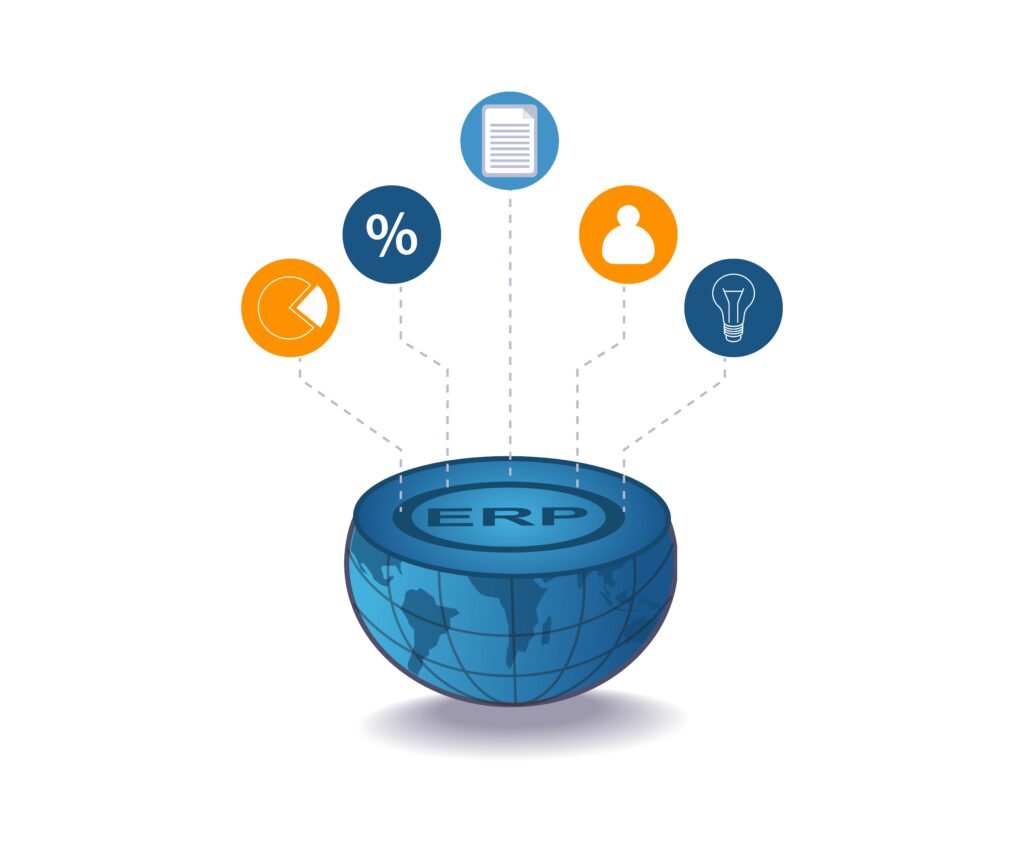In modern business, supply chain management is experiencing a revolutionary shift due to digital transformation. The supply chain, once viewed as a linear flow of goods and information from suppliers to consumers, has evolved into a complex, interconnected ecosystem. This change is driven by the rise of advanced technologies such as Artificial Intelligence (AI), the Internet of Things (IoT), blockchain, robotics, and big data. As companies navigate this new digital terrain, managing and controlling their supply chains has become more challenging yet offers unprecedented opportunities for optimisation, efficiency, and agility. Digital transformation in the supply chain is not just about technology but about rethinking how companies operate, collaborate, and deliver value to their customers.
In this dynamic environment, faster response times, real-time data access, and greater transparency are critical. Businesses face growing pressure to meet customer expectations, improve sustainability, reduce costs, and mitigate risks from disruptions like natural disasters, pandemics, and geopolitical tensions. However, the digital era also empowers supply chain managers to make data-driven decisions, predict demand more accurately, and enhance customer satisfaction by delivering goods faster and more reliably.
This article explores the multifaceted impact of digital transformation on supply chain management. It outlines how businesses can control and optimize their supply chains through advanced technology, while also addressing the challenges they may face along the way. By examining key areas such as big data analytics, AI, IoT, blockchain, and automation, we will uncover how these tools are reshaping supply chains and enabling businesses to remain competitive in an increasingly volatile global market.
Leveraging Big Data and Analytics for Enhanced Decision Making
The power of big data in supply chain management lies in its ability to collect and process vast amounts of information from various sources—be it suppliers, customers, or internal operations. Through sophisticated analytics tools, businesses can transform this raw data into actionable insights that drive better decision-making at every stage of the supply chain. Big data analytics allows for a granular understanding of demand patterns, inventory levels, transportation logistics, and customer behaviour.
By utilizing predictive analytics, companies can forecast future demand with higher accuracy, anticipate disruptions, and plan their resources more effectively. This proactive approach reduces inefficiencies and minimizes waste, resulting in lower operational costs and improved service levels. For instance, retailers can use real-time data analytics to adjust their stock levels based on consumer purchasing trends, avoiding both stockouts and overstocking scenarios. Additionally, data-driven insights enable supply chain managers to identify bottlenecks, optimize routes, and implement just-in-time inventory systems that enhance overall supply chain efficiency.
The integration of big data also fosters collaboration across different departments, ensuring that procurement, manufacturing, logistics, and sales teams are aligned. In a world where information is constantly changing, big data provides the agility needed to respond quickly to market fluctuations and customer demands, giving companies a competitive edge.
Adopting Artificial Intelligence (AI) for Supply Chain Optimization
Artificial Intelligence (AI) is revolutionizing supply chain management by automating repetitive processes and enhancing decision-making through machine learning algorithms. AI-powered systems are capable of analyzing complex datasets, learning from historical trends, and making real-time adjustments to optimize supply chain performance.
One of the most significant contributions of AI to supply chain control is in demand forecasting. AI models can process vast amounts of data from past sales, weather conditions, economic indicators, and consumer preferences to predict future demand with remarkable accuracy. This allows companies to avoid overproduction or underproduction, ultimately reducing excess inventory costs and ensuring that products are available when and where they are needed.
AI is also instrumental in optimizing logistics and transportation management. By analyzing traffic patterns, fuel costs, and delivery schedules, AI can suggest the most efficient delivery routes, minimizing delays and reducing transportation costs. In warehouses, AI-driven automation can handle tasks such as sorting, picking, and packing with greater speed and precision than human workers, increasing operational efficiency and reducing the risk of errors.
Moreover, AI can be deployed to enhance supplier management. By continuously monitoring supplier performance data, AI systems can alert businesses to potential issues—such as delays, quality concerns, or capacity constraints—allowing for swift corrective action. The ability to predict potential disruptions and adjust plans in real-time gives businesses greater control over their supply chains.
Integrating the Internet of Things (IoT) for Real-Time Monitoring
The Internet of Things (IoT) is a network of connected devices that collect and share data in real time, offering unparalleled visibility across the supply chain. In supply chain management, IoT sensors and devices can be embedded in vehicles, warehouses, and products to monitor their status, location, and condition as they move through the supply chain.
For logistics companies, IoT-enabled tracking devices provide real-time information on the exact location of shipments, enabling more accurate delivery estimates and reducing the likelihood of lost or misplaced goods. This real-time visibility helps businesses respond quickly to any potential delays or disruptions, improving customer service and reducing costs associated with late deliveries.
In addition to tracking location, IoT sensors can monitor the condition of goods, especially for industries like food, pharmaceuticals, and electronics, where product quality is essential. Sensors can track temperature, humidity, and other environmental factors during transportation to ensure that products arrive in optimal condition. Any deviations from the desired conditions trigger automatic alerts, allowing for immediate corrective action.
IoT also plays a critical role in warehouse management, enabling automated inventory tracking and asset management. By using RFID tags and IoT devices, businesses can track stock levels in real time, reducing the need for manual inventory counts and preventing stock discrepancies. This level of visibility allows companies to maintain tighter control over their inventory and reduce the risk of stockouts or overstocking.
Enhancing Supply Chain Security with Blockchain Technology
Blockchain technology offers a decentralized and transparent ledger system that can significantly improve supply chain security and traceability. In traditional supply chains, data is often siloed, making it difficult to track the origin and movement of goods. Blockchain solves this problem by creating a tamper-proof record of transactions that can be shared across the entire supply chain network.
In the context of supply chain management, blockchain ensures that every transaction—whether it’s a purchase order, a shipment, or a payment—is recorded and verified by multiple parties. This level of transparency helps prevent fraud, counterfeiting, and unauthorized changes to product data. For industries that rely on authenticity, such as luxury goods, pharmaceuticals, and food, blockchain provides a way to verify the provenance of products, ensuring they meet regulatory and quality standards.
Moreover, blockchain enables the use of smart contracts, which automatically execute predefined actions when certain conditions are met. For example, payment to a supplier could be automatically triggered once goods are delivered and verified through blockchain. This streamlines the procurement process, reduces administrative overhead, and eliminates delays caused by manual verification processes.
Enhancing Collaboration and Communication through Cloud Technology
Cloud technology has become a critical enabler of collaboration and communication in the modern supply chain. Cloud-based platforms allow companies to integrate their supply chain partners—suppliers, manufacturers, logistics providers, and retailers—on a unified platform, ensuring that everyone has access to the same real-time information.
This seamless flow of information allows for faster decision-making and greater coordination across the supply chain. For example, if a supplier experiences a delay, this information is immediately shared with the manufacturer and logistics provider, allowing them to adjust their plans accordingly. Cloud technology also facilitates more effective demand planning, as real-time sales data can be instantly shared with suppliers to adjust production levels and avoid stockouts.
Additionally, cloud-based systems enable companies to collaborate with partners across geographical boundaries, reducing the need for in-person meetings and physical documentation. This level of digital integration not only speeds up processes but also reduces costs associated with administrative tasks and communication delays.
Implementing Robotics and Automation for Warehouse Efficiency
As e-commerce and customer demand for faster deliveries continue to grow, robotics and automation have become essential tools for optimizing warehouse operations. Automated guided vehicles (AGVs), drones, and robotic arms can streamline tasks such as picking, packing, sorting, and transporting goods within the warehouse.
Automation reduces reliance on manual labour and minimizes human errors, resulting in faster and more accurate order fulfilment. Robotic systems can work around the clock, enabling companies to meet the increasing demand for next-day and same-day delivery. In addition, automated systems can optimize space utilization in warehouses by organizing products more efficiently and reducing the time required to locate and retrieve items.
Furthermore, automation helps businesses scale their operations without needing to significantly increase headcount, leading to long-term cost savings. As customer expectations for speed and accuracy rise, automation will play a crucial role in helping companies meet these demands while maintaining operational efficiency.
Sustainable Supply Chain Practices in the Digital Age
In the age of digital transformation, sustainability has become a key focus for supply chain management. Customers, investors, and regulators are increasingly demanding that businesses adopt environmentally responsible practices throughout their supply chains. Fortunately, digital tools can help companies optimize resource usage, reduce waste, and lower their carbon footprint.
AI and big data analytics allow companies to optimize transportation routes, reducing fuel consumption and emissions. IoT sensors can monitor energy usage in factories and warehouses, identifying areas where energy efficiency can be improved. Blockchain can ensure that raw materials are sourced sustainably by providing transparency into the supply chain and verifying the ethical practices of suppliers.
Sustainability is no longer just a competitive advantage—it’s becoming a requirement for doing business in many industries. Companies that integrate sustainability into their supply chain strategies will not only reduce their environmental impact but also improve their brand reputation and meet the expectations of socially conscious consumers.
Improving Customer Experience through Digitally Transformed Supply Chains
The ultimate goal of supply chain management is to deliver products to customers in a timely and cost-effective manner. In the digital age, customer expectations for speed, transparency, and reliability are higher than ever. A digitally transformed supply chain enables businesses to meet these expectations by providing real-time tracking, faster delivery times, and more efficient last-mile logistics.
By leveraging digital tools like AI, IoT, and cloud technology, businesses can offer customers real-time updates on the status of their orders, from production to delivery. This level of transparency builds trust and enhances the overall customer experience. Furthermore, digital supply chains can respond more quickly to changes in customer demand, ensuring that businesses have the right products available when and where they are needed.
In conclusion, digital transformation is reshaping supply chain management in profound ways. From enhancing decision-making with big data to improving visibility with IoT and securing transactions with blockchain, businesses that embrace these technologies will be better positioned to control and optimize their supply chains in the face of increasing complexity and competition. By staying agile and leveraging the power of digital tools, companies can unlock new levels of efficiency, resilience, and customer satisfaction.
Conclusion
The digital transformation of supply chains presents both challenges and opportunities for businesses. While the complexity of supply chain operations has increased, the availability of advanced technologies like AI, IoT, big data, and blockchain provides companies with the tools to manage and control their supply chains more efficiently than ever before. By adopting these technologies, businesses can optimize their operations, reduce costs, and respond quickly to market changes and disruptions. Furthermore, sustainability, transparency, and customer satisfaction are becoming critical factors in supply chain success in the digital age. Companies that embrace digital transformation and integrate these technologies into their supply chain strategies will be well-positioned to navigate the future of global commerce with agility and resilience.









